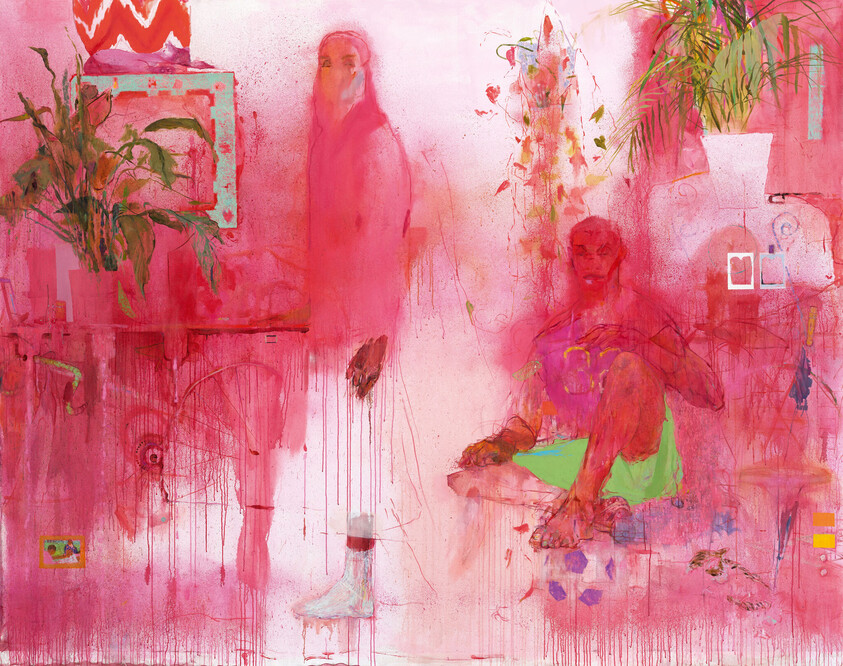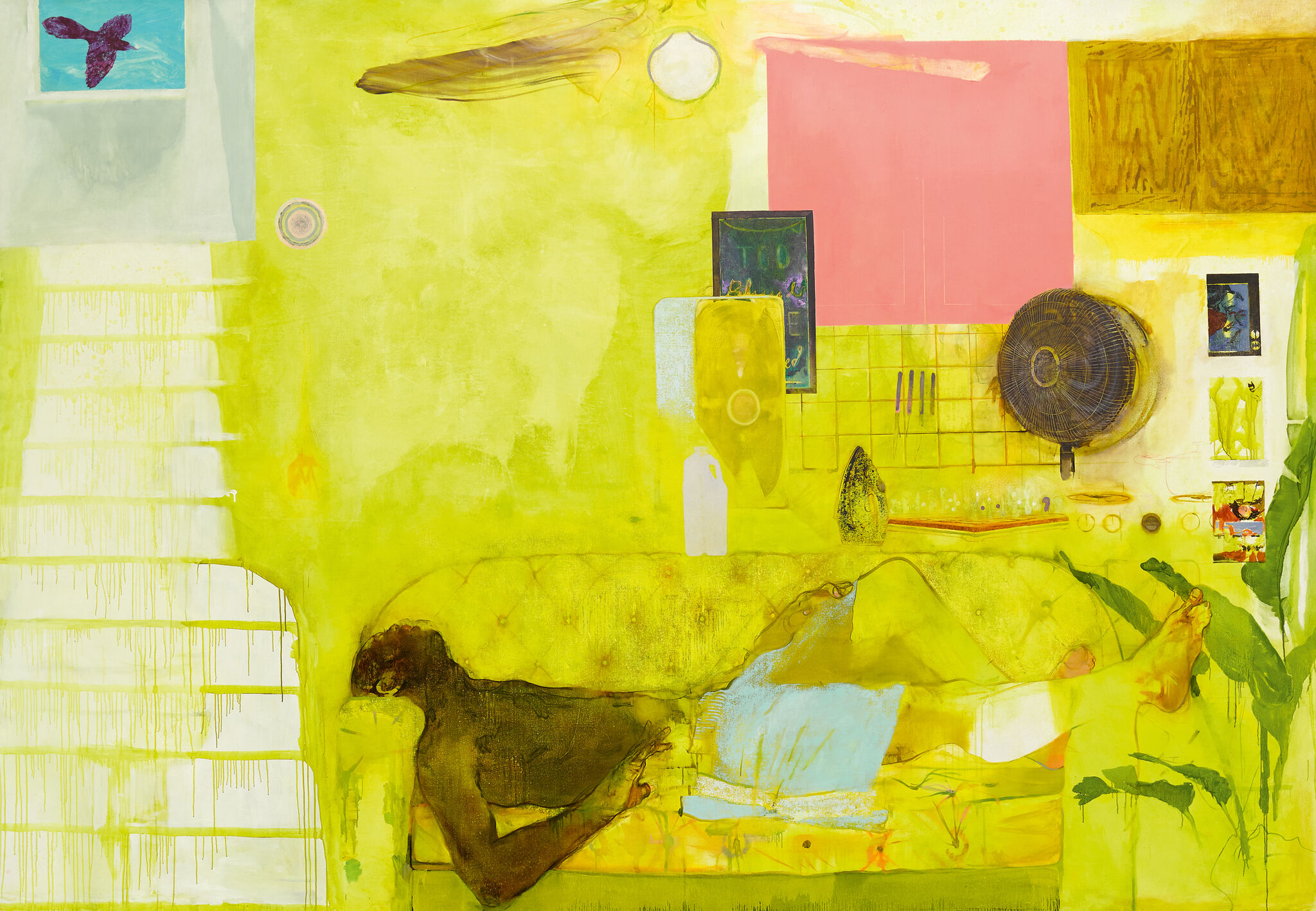Vision Impaired
Oct 28, 2021
0:00
Vision Impaired
0:00
Narrator: In Vision Impaired, Packer experiments with monochromatic painting—that is, working primarily in one color.
Rujeko Hockley: Packer’s use of monochrome is very specific, and she has talked about, at this point, that she was really interested in giving equal importance to negative space and the adornment of the environment.
Narrator: Rujeko Hockley.
Rujeko Hockley: And so she’s thinking about what do you need to create details, how much information do you need to give to the viewer, whether that be in terms of line, shade, tone of color, et cetera.
And so here, you see there’s a figure that emerges on the right side of the canvas, their upper body and arm. The arm is maybe the most visible. They’re sitting on a cushion or a couch of some sort. And then their legs extend out in front of them towards the left side of the canvas. And as we’ve seen in other works, her use of negative space is really important here, because most of the figure, at least the portions of the figure that you’re able to use to discern where their body is in the space are actually visible through the use of negative space. So the white of the canvas is what delineates this person’s arm, their leg, their foot on the left side has a little bit more detail, but fundamentally you're really using negative space, which is a really interesting way of approaching image making.
Color I think is what we think of as being how we distill details and share information, especially in two dimensions. But here she’s really pushing back against that idea and really paring things down to their essentials.


